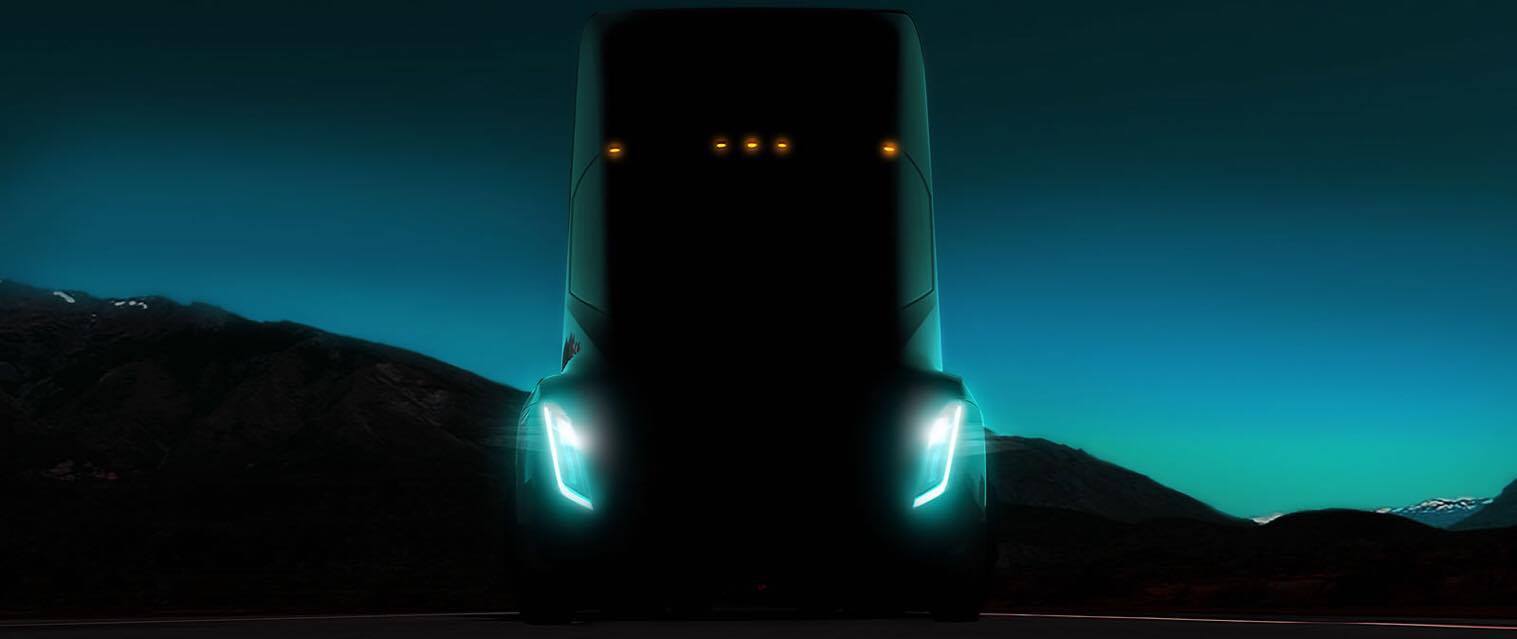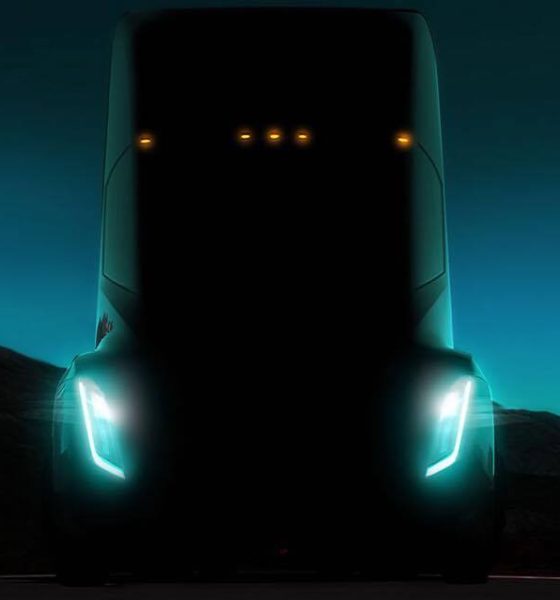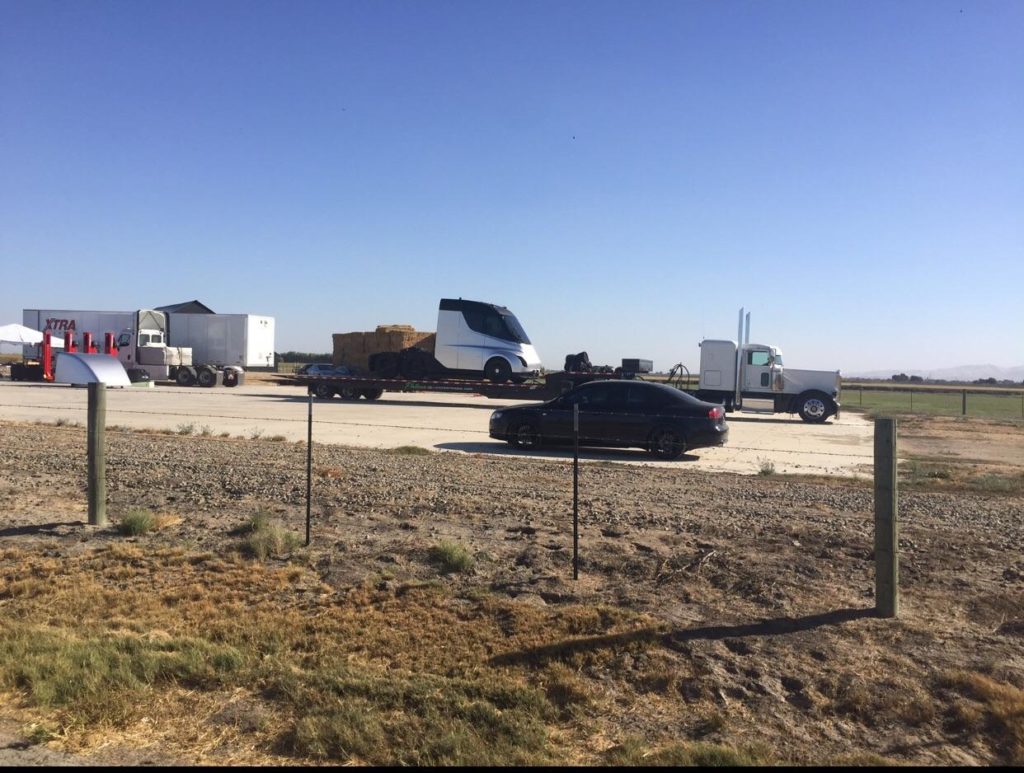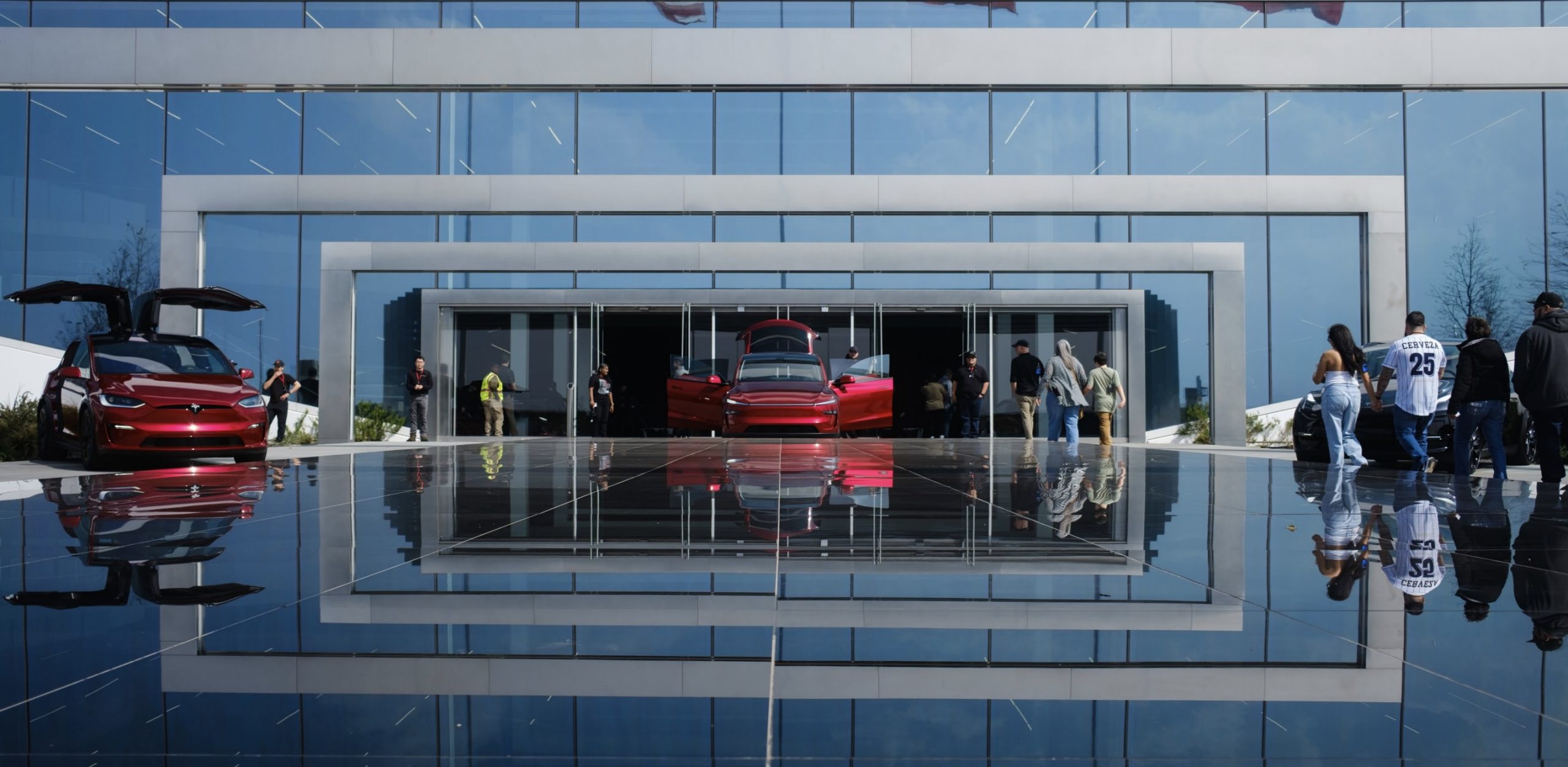

Investor's Corner
How Tesla’s Semi-truck could disrupt the commercial trucking industry
Tesla is already taking the world by storm with its fleet of consumer electric cars and the company’s push toward fully autonomous self-driving technology. Now, the Silicon Valley-based car maker and technology company has set its sights on the trucking industry, with the introduction of a fully electric semi-truck on the horizon. What will this mean to the trucking industry if Tesla succeeds?
Electric Semi-Trucks
With the official unveiling set for Oct. 26, Tesla fans and industry experts are speculating about the kind of impact its electric semi-truck could have on the commercial trucking industry as a whole.
The idea behind the Tesla Semi, which Elon Musk has affectionately called a “beast”, is to make it less expensive to operate than its gas and diesel counterparts on account of reduced maintenance, fuel, and insurance costs. This could result in operational cost reductions of 70% over existing trucks on the market, according to Adam Jonas of Morgan Stanley.
Tesla has also gathered billion of miles of driving data from the Autopilot hardware that’s equipped on its latest Model S and Model X vehicles. Using this vast dataset, Tesla aims to create a detailed 3D map of the world that will increasingly become more detailed as fleet data is collected. This dataset allows Tesla’s Vision and artificial intelligence team to train complex algorithms for its Full Self-Driving technology, which will one day allow Tesla’s fleet of consumer vehicles and its upcoming semi-truck to recognize traffic indicators, identify pedestrians and, overall, operate on near-parity with human decision making, before exceeding it.
ASLO SEE: Tesla Autopilot and artificial intelligence: The unfair advantage
Being able to offer this level of automation will be transformative for entire industries, including the commercial trucking segment. Companies that have traditionally built their shipping and logistics models based on human capabilities will be able to better manage their manpower costs, while increasing efficiency at safer levels across the organization through Tesla’s automation. Combined with the fact that a Tesla Semi will emit no tailpipe emissions, in a world where regulations on emission standards are becoming increasingly more strict and manufacturers are pushing to transition toward all-electric fleets, and the industry impact of Tesla’s semi-truck becomes even more clear.

Tesla’s Semi-truck spied ahead of its October 26, 2017 official unveiling event.
Execution
We’re still waiting for exact specifications for Tesla’s Semi like range and hauling capacity, but early reports by Reuters suggests that the electric truck will have a range between 200 and 300 miles. The relatively short range by long-haul trucking standards means that Tesla will likely target regional hauling. Any further than that would require a massive a battery that would be cost prohibitive for most companies looking to incorporate Tesla into its expense model.
Electric trucks might sound like a great innovation, but they aren’t without perils given current technology. First, electric trucks are going to require a new class of technicians to keep them primed and operating efficiently. Yes, Tesla cars are known to operate hundreds of thousands of miles without much trouble, but there’s no way to project how the wear and tear of the long haul will affect these new electric trucks.
Production will be the other big question. Tesla CEO Elon Musk is known to have an optimistic outlook when it comes to delivering his vision to the masses. But keeping to deadlines couldn’t be more important to a consumer and commercial goods industry that’s largely dependent on having a smooth running supply chain. Companies that commit to augmenting its business with a Tesla Semi or looking to transition in full to an all-electric fleet of trucks will certainly have less tolerance for delays than the general Model S, Model X, and Model 3 consumer market. This is especially the case for publicly traded companies.
Tune in on Teslarati as we bring you coverage on all Tesla Semi developments. And be sure to follow us @Teslarati or like us on Facebook to see live behind the scenes coverage from the Tesla Semi event on October 26.

Investor's Corner
Tesla Q4 delivery numbers are better than they initially look: analyst
The Deepwater Asset Management Managing Partner shared his thoughts in a post on his website.

Longtime Tesla analyst and Deepwater Asset Management Managing Partner Gene Munster has shared his insights on Tesla’s Q4 2025 deliveries. As per the analyst, Tesla’s numbers are actually better than they first appear.
Munster shared his thoughts in a post on his website.
Normalized December Deliveries
Munster noted that Tesla delivered 418k vehicles in the fourth quarter of 2025, slightly below Street expectations of 420k but above the whisper number of 415k. Tesla’s reported 16% year-over-year decline, compared to +7% in September, is largely distorted by the timing of the tax credit expiration, which pulled forward demand.
“Taking a step back, we believe September deliveries pulled forward approximately 55k units that would have otherwise occurred in December or March. For simplicity, we assume the entire pull-forward impacted the December quarter. Under this assumption, September growth would have been down ~5% absent the 55k pull-forward, a Deepwater estimate tied to the credit’s expiration.
“For December deliveries to have declined ~5% year over year would imply total deliveries of roughly 470k. Subtracting the 55k units pulled into September results in an implied December delivery figure of approximately 415k. The reported 418k suggests that, when normalizing for the tax credit timing, quarter-over-quarter growth has been consistently down ~5%. Importantly, this ~5% decline represents an improvement from the ~13% declines seen in both the March and June 2025 quarters.“
Tesla’s United States market share
Munster also estimated that Q4 as a whole might very well show a notable improvement in Tesla’s market share in the United States.
“Over the past couple of years, based on data from Cox Automotive, Tesla has been losing U.S. EV market share, declining to just under 50%. Based on data for October and November, Cox estimates that total U.S. EV sales were down approximately 35%, compared to Tesla’s just reported down 16% for the full quarter. For the first two months of the quarter, Cox reported Tesla market share of roughly a 65% share, up from under 50% in the September quarter.
“While this data excludes December, the quarter as a whole is likely to show a material improvement in Tesla’s U.S. EV market share.“
Elon Musk
Tesla analyst breaks down delivery report: ‘A step in the right direction’
“This will be viewed as better than feared deliveries and a step in the right direction for the Tesla story heading into 2026,” Ives wrote.

Tesla analyst Dan Ives of Wedbush released a new note on Friday morning just after the company released production and delivery figures for Q4 and the full year of 2025, stating that the numbers, while slightly underwhelming, are “better than feared” and as “a step in the right direction.”
Tesla reported production of 434,358 and deliveries of 418,227 for the fourth quarter, while 1,654,667 vehicles were produced and 1,636,129 cars were delivered for the full year.
Tesla releases Q4 and FY 2025 vehicle delivery and production report
Interestingly, the company posted its own consensus figures that were compiled from various firms on its website a few days ago, where expectations were set at 1,640,752 cars for the year. Tesla fell about 4,000 units short of that. One of the areas where Tesla excelled was energy deployments, which totaled 46.7 GWh for the year.
🚨 Wedbush’s Dan Ives has released a new note on Tesla $TSLA:
“Tesla announced its FY4Q25 delivery numbers this morning coming in at 418.2k vehicles slightly below the company’s consensus delivery estimate of 422.9k but much better than the whisper numbers of ~410k as the…
— TESLARATI (@Teslarati) January 2, 2026
In terms of vehicle deliveries, Ives writes that Tesla certainly has some things to work through if it wants to return to growth in that aspect, especially with the loss of the $7,500 tax credit in the U.S. and “continuous headwinds” for the company in Europe.
However, Ives also believes that, given the delivery numbers, which were on par with expectations, Tesla is positioned well for a strong 2026, especially with its AI focus, Robotaxi and Cybercab development, and energy:
“This will be viewed as better than feared deliveries and a step in the right direction for the Tesla story heading into 2026. We look forward to hearing more at the company’s 4Q25 call on January 28th. AI Valuation – The Focus Throughout 2026. We believe Tesla could reach a $2 trillion market cap over the coming year and, in a bull case scenario, $3 trillion by the end of 2026…as full-scale volume production begins with the autonomous and robotics roadmap…The company has started to test the all-important Cybercab in Austin over the past few weeks, which is an incremental step towards launching in 2026 with important volume production of Cybercabs starting in April/May, which remains the golden goose in unlocking TSLA’s AI valuation.”
It’s no secret that for the past several years, Tesla’s vehicle delivery numbers have been the main focus of investors and analysts have looked at them as an indicator of company health to a certain extent. The problem with that narrative in 2025 and 2026 is that Tesla is now focusing more on the deployment of Full Self-Driving, its Optimus project, AI development, and Cybercab.
While vehicle deliveries still hold importance, it is more crucial to note that Tesla’s overall environment as a business relies on much more than just how many cars are purchased. That metric, to a certain extent, is fading in importance in the grand scheme of things, but it will never totally disappear.
Ives and Wedbush maintained their $600 price target and an ‘Outperform’ rating on the stock.
Investor's Corner
Tesla releases Q4 and FY 2025 vehicle delivery and production report
Deliveries stood at 406,585 Model 3/Y and 11,642 other models, for a total of 418,227 vehicles.

Tesla (NASDAQ:TSLA) has reported its Q4 2025 production and deliveries, with 418,227 vehicles delivered and 434,358 produced worldwide. Energy storage deployments hit a quarterly record at 14.2 GWh.
Tesla’s Q4 and FY 2025 results were posted on Friday, January 2, 2026.
Q4 2025 production and deliveries
In Q4 2025, Tesla produced 422,652 Model 3/Y units and 11,706 other models, which are comprised of the Model S, Model X, and the Cybertruck, for a total of 434,358 vehicles. Deliveries stood at 406,585 Model 3/Y and 11,642 other models, for a total of 418,227 vehicles.
Energy deployments reached 14.2 GWh, a new record. Similar to other reports, Tesla posted a company thanked customers, employees, suppliers, shareholders, and supporters for its fourth quarter results.
In comparison, analysts included in Tesla’s company-compiled consensus estimate that Tesla would deliver 422,850 vehicles and deploy 13.4 GWh of battery storage systems in Q4 2025.
Tesla’s Full Year 2025 results
For the full year, Tesla produced a total of 1,654,667 vehicles, comprised of 1,600,767 Model Y/3 and 53,900 other models. Tesla also delivered 1,636,129 vehicles in FY 2025, comprised of 1,585,279 Model Y/3 and 50,850 other models. Energy deployments totaled 46.7 GWh over the year.
In comparison, analysts included in Tesla’s company-compiled consensus expected the company to deliver a total of 1,640,752 vehicles for full year 2025. Analysts also expected Tesla’s energy division to deploy a total of 45.9 GWh during the year.
Tesla will post its financial results for the fourth quarter of 2025 after market close on Wednesday, January 28, 2026. The company’s Q4 and FY 2025 earnings call is expected to be held on the same day at 4:30 p.m. Central Time.








